
Overview
Greenhouse cultivation involves growing plants in enclosed structures with transparent walls to control temperature, humidity, and light, extending the growing season and protecting plants from harsh conditions. Indoor plant cultivation focuses on growing plants indoors using artificial lighting and controlled environments, commonly for decorative purposes or adapting plants to local climates. Both methods provide controlled conditions for optimal growth and are used in commercial agriculture and personal spaces.
Depending on specific features and functions, GAO Tek’s anemometers are sometimes referred to as Wind speed meters, Wind gauges, Wind velocity sensors, Air speed instruments, Wind anemoscopes, Air flow meters, Wind rate detectors, Breeze measurement tools, Zephyr gauges, Wind velocity detectors.
GAO Tek’s anemometers have the following applications in greenhouse and indoor plant cultivation:
- Ventilation Control: Anemometers are used to monitor wind speed within the greenhouse. This information helps in adjusting ventilation systems, such as louvers or fans, to maintain the desired airflow. Proper ventilation prevents heat buildup, humidity imbalance, and ensures a consistent exchange of air, crucial for plant health.
- Temperature Regulation: Wind speed affects temperature distribution within a greenhouse. Anemometers help optimize heating and cooling systems by adjusting air circulation based on wind speed data. This ensures uniform temperature and prevents cold or hot spots that could harm plants.
- Pest and Disease Prevention: Monitoring wind speed can help prevent the spread of pests and diseases. High winds can carry insects or pathogens, so knowing wind patterns assists in strategic placement of plants and in implementing protective measures.
- Greenhouse Structural Safety: Anemometers help in monitoring wind gusts and high-speed events that might put stress on the greenhouse structure. This information allows for preventive actions to safeguard the greenhouse and its contents.
- Airflow Optimization: Anemometers aid in determining the efficiency of airflow within indoor growing spaces. Proper air movement prevents stagnant air pockets that could lead to mold, mildew, or poor CO2 distribution.
- Temperature and Humidity Control: Wind speed affects how effectively temperature and humidity are distributed in an indoor space. Anemometers provide insights for adjusting ventilation and HVAC systems to maintain stable conditions for plant growth.
- Light Distribution: In setups using artificial lighting, wind can influence how light is dispersed. Anemometers help in positioning grow lights for uniform coverage, preventing overexposure or shadowed areas.
- Hydroponic and Aeroponic Systems: Anemometers play a role in hydroponic and aeroponic setups, where roots are exposed to air or mist. Monitoring wind speed ensures that mist or nutrient-rich air is delivered optimally to plant roots.
- Indoor Air Quality: Adequate airflow, aided by anemometers, contributes to better indoor air quality by preventing the accumulation of pollutants and ensuring CO2 availability for photosynthesis.
More information on anemometers and their applications in other industries can be found on this page.
This category page lists related products
Environmental Test Instruments
GAO Tek’s targeted markets are North America, particularly the U.S., Canada, Mexico, and Europe. Hence, in addition to English, this website gaotek.com is offered in other major languages of North America and Europe such as Spanish, French, German, Italian, Polish, Ukrainian, Romanian, Russian, Dutch, Turkish, Greek, Hungarian, Swedish, Czech, Portuguese, Serbian, Bulgarian, Croatian, Danish, Finnish, Norwegian, Slovak, Catalan, Lithuanian, Bosnian, Galician, Slovene, Latvian, Estonian, Welsh, Icelandic, and Irish.
Complying with Greenhouse and Indoor Plant Cultivation
Standards
GAO Tek’s anemometers comply or help our customers comply with the greenhouse and indoor plant cultivation standards such as:
- ISO 9060:1990
- ISO 7726:1998
- IEC 60947
- Local Electrical and Safety Standards
- Good Agricultural Practices (GAP) Guidelines
- ASABE Standards (American Society of Agricultural and Biological Engineers)
- ASTM Standards (American Society for Testing and Materials)
Complying with Government Regulations
GAO Tek’s anemometers comply or help our customers comply with the U.S. government regulations such as
- OSHA (Occupational Safety and Health Administration)
- NEC (National Electrical Code)
- EPA (Environmental Protection Agency) Guidelines
- FDA (Food and Drug Administration) Regulations
- USDA (United States Department of Agriculture)
- Good Agricultural Practices (GAP)
- Local Building Codes and Zoning Regulations
- Local Environmental Regulations
GAO Tek’s anemometers comply or help our clients comply with the Canadian regulations such as
- CSA Standards (Canadian Standards Association)
- Occupational Health and Safety Regulations
- CFIA (Canadian Food Inspection Agency) Regulations
- Health Canada Regulations
- Canadian Environmental Regulations
- Good Agricultural Practices (GAP)
- Local Building Codes and Zoning Regulations
- Provincial Agricultural Regulations
GAO Tek’s anemometers comply or help our clients comply with the Mexican regulations such as
- NOM (Norma Oficial Mexicana)
- Secretaría de Agricultura y Desarrollo Rural (SADER)
- Environmental Regulations
- Mexican Electrical Standards
- Food Safety and Agricultural Product Regulations
- Local Building Codes and Zoning Regulations
- Good Agricultural Practices (GAP)
GAO Tek’s anemometers comply or help our clients comply with the European regulations such as
- CE Marking
- ISO Standards
- EU Agricultural Regulations
- EU Environmental Regulations
- Food Safety Regulations
- Building Codes and Regulations
- Good Agricultural Practices (GAP)
- National Regulations
Case Studies of Anemometers in Greenhouse and Indoor Plant Cultivation
Anemometers are sometimes called as Wind speed meters, Wind gauges, Wind velocity sensors, Air speed instruments, Wind anemoscopes, Air flow meters, Wind rate detectors, Breeze measurement tools, Zephyr gauges, Wind velocity detectors.
Here are some practical examples of using anemometers in greenhouse and indoor plant cultivation:
Anemometers can be used in conjunction with temperature sensors to regulate ventilation systems in greenhouses. In the Northeast, where temperature fluctuations can be significant, anemometers can help ensure that ventilation is appropriately adjusted to prevent overheating or chilling of plants.
High-value crops like herbs, berries, or specialty flowers may require precise environmental control. Anemometers can help monitor airflow around these plants to ensure even distribution of temperature and humidity, reducing the risk of disease and optimizing growth conditions.
In the Northeast, where winters can be harsh, indoor plant cultivation becomes crucial. Anemometers can be used to monitor airflow and ensure efficient distribution of warmth from heaters or artificial lighting systems, allowing for year-round cultivation.
Urban farming initiatives in the Northeast often involve vertical farms. Anemometers placed at different levels of the vertical growing system can help optimize airflow within the structure, ensuring that all plants receive adequate air circulation.
Universities and research institutions in the Northeast might use anemometers to study how different wind speeds affect plant growth in controlled environments, contributing to advancements in indoor cultivation practices.
Anemometers can help fine-tune airflow and mist distribution in hydroponic and aeroponic setups, ensuring that nutrients and moisture are efficiently delivered to plant roots.
Anemometers can be strategically placed to monitor air movement and help prevent the spread of airborne diseases within the greenhouse environment.
Anemometers can provide data that assists in optimizing energy usage by adjusting heating, cooling, and ventilation systems based on wind speed and direction.
Anemometers are used to monitor wind speed and guide the adjustment of greenhouse ventilation systems. This could involve assessing how different wind speeds affect temperature regulation and plant health.
Anemometer data are used to design windbreaks or modify greenhouse layouts to minimize heat loss due to strong winds.
Anemometers contribute to the management of microclimates around individual plant tiers or shelves to ensure uniform growth conditions.
Wind can increase the rate of evaporation and affect irrigation needs. Anemometer data guide irrigation schedules to prevent moisture stress.
In urban environments with limited space, vertical farming is common. Anemometer data are used to optimize airflow in multi-level growing systems.
Anemometers could be employed to monitor wind speed and assess the structural safety of greenhouse or indoor cultivation facilities during storms.
Anemometers could be employed to assess wind speed and its impact on evaporation rates. Anemometer data are used to adjust irrigation schedules and water application methods.
In the South’s sunny climate, anemometers might guide the deployment of shade cloth or sunscreen products to protect plants from excessive sunlight.
Anemometer data could influence pest management practices by guiding the placement of barriers that prevent pests from being carried by strong winds.
In regions with cold winters and hot summers, like Canada, anemometer data could guide ventilation adjustments to maintain optimal temperatures. A case study could focus on how anemometers help prevent overheating and chilling.
Anemometers are employed in multi-tiered indoor farming systems to optimize air circulation and ensure consistent growth conditions across levels.
In urban areas, anemometers could play a role in optimizing airflow and temperature in limited indoor spaces dedicated to cultivation.
GAO RFID Inc. RFID Hardware, a sister company of GAO Tek Inc., is ranked as a top 10 RFID supplier in the world. Its RFID, BLE, and IoT products have also been widely used in greenhouse and indoor plant cultivation.
Use of Anemometers with Leading Software and Cloud Services in Greenhouse and Indoor Plant Cultivation
GAO Tek has used or has facilitated its customers to use GAO’s anemometers with some of the leading software and cloud services in their applications. Examples of such leading software and cloud services include
- AWS IoT Core
- Azure IoT Hub
- Google Cloud IoT Core
- IBM Watson IoT Platform
- Amazon SageMaker
- Microsoft Azure Machine Learning
- Google Cloud AI Platform
- IBM Watson Studio
- MathWorks MATLAB Online
- Tableau Online
- Google Data Studio
- Power BI
- Domo
- Particle Cloud
- Losant
- Ubidots
- ThingSpeak
- PlatformIO IoT Cloud
- Teralytic
- Helium
- Virtual Grower
- Grower Advisor
- GreenSim
- Qlik Sense Cloud
- Looker
- Metabase
- Redash
GAO Tek’s anemometers and their applications in other industries are listed on this page.
Environmental Test Instruments
Other related products can be found at this category page.
Meeting Customers’ Demands
Large Choice of Products
In order to satisfy the diversified needs of their corporate customers, GAO Tek Inc. and its sister company GAO RFID Inc. together offer a wide choice of testing and measurement devices, network products, RFID, BLE, IoT, and drones.
Fast Delivery
To shorten the delivery to our customers, GAO has maintained a large stock of its products and is able to ship overnight within the continental U.S. and Canada, and fast delivery to Mexico and Europe from the nearest warehouse.
Local to Our Customers
We are located in both the U.S. and Canada. We travel to customers’ premises if necessary. Hence, we provide a very strong local support to our customers in North America, particularly the U.S., Canada and Mexico and Europe. Furthermore, we have built partnerships with some integrators, consulting firms and other service providers in different cities to further strengthen our services. Here are some of the service providers in greenhouse and indoor plant cultivation we have worked with to serve our joint customers:
- Bevo Agro Inc.
- Sunset Grown
- Sakata Seed Mexico
- Grupo Viz
- Grupo Altex
- GreenPoint Agroindustrial
- Grupo OSF
- Grodan Group
- Rijk Zwaan
- Beekenkamp Plants
- De Ruiter Seeds
- Dalsem Group
GAO Has Many Customers in Greenhouse and Indoor Plant Cultivation
The products from both GAO Tek Inc. and GAO RFID Inc. have been widely used in greenhouse and indoor plant cultivation by many customers, including some leading companies. Here is more information on applications of GAO RFID Inc.’s products in greenhouse and indoor plant cultivation.
Agriculture, Forestry & Fisheries | RFID Solutions
Here are some of GAO’s customers in greenhouse and indoor plant cultivation:
- BrightFarms
- AeroFarms
- Plenty
- Bowery
- AppHarvest
- Gotham Greens
- Revolution
- Indigo Ag
- Lettuce Grow
- One
- Freight Farms
- Kalera
- Vertical Harvest
- Plant Chicago
- InFarm
- Crop One
- Modern Sprout
- Planted Detroit



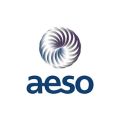
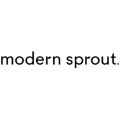


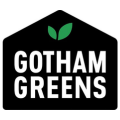




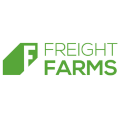
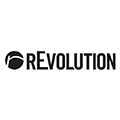

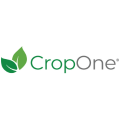


Contact Us
If you are interested in our products, services or partnering with us, please feel free to contact us by filling out this form:
or email us at sales@gaotek.com
